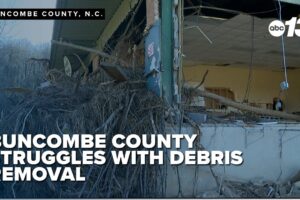
Planned obsolescence is a business strategy in which items are designed to be obsolete, unfashionable, unusable, or defective in a short period of time. This results in us throwing away things that are basically new, purchasing replacements at a higher price point with new features. It also results in higher profit margins for manufacturers and an economy driven by rabid consumerism.
Link to my Patreon page: https://www.patreon.com/Belinda_Carr
Chapters
0:00 Introduction
1:34 Contrived Durability
2:55 Prevention of Repairs
3:58 Systemic Strategy
4:53 Programming/Design
5:59 Legal Intervention
6:34 Perceived obsolescence
7:29 Layers of Change
8:18 Conclusion
CONTRIVED DURABILITY Manufacturers purposely reduce the lifetime of a product so that it deteriorates quickly, usually right after the warranty ends. Homes are designed to meet the minimum Building Code requirements. Builders use nails to secure walls to roof rafters instead of more durable metal straps. They also use nails to anchor walls to a foundation rather than more expensive bolts. All these decisions can collectively reduce the lifetime of a building.
PREVENTION OF REPAIRS Unibody designs or soldered parts prevent owners from repairing products. Replacement parts are also expensive and difficult to find. This has turned traditionally durable goods into single-use, disposable items. Panasonic’s infrared toaster oven has an on/off switch that is soldered to the circuit board. Frontloading washing machines have a drum bearing that is prone to wear and tear. Finally, spray foam. When applied correctly, it can create an air-tight building but electrical wiring and plumbing is embedded in the insulation, which will make home repairs and remodels a nightmare.
SYSTEMIC STRATEGY deliberately ensures that the current version of a product will become outdated and incompatible with newer versions. In January 2020, the EPA banned the production of R-22 refrigerant or freon, which was widely used in air conditioners. This is a good thing for the environment but the ban has made repairs ridiculously expensive. Another example of systemic strategy is changing floor designs.
PROGRAMMING/DESIGN can also lower the life expectancy of materials. In many cities, it is illegal to shut off water supply at the curb without permission from the utility company but not every house has a valve inside. Foundation repair is a HUGE business in the Dallas Fort Worth area. Homes have either had foundation repairs or will need it in the future. Despite knowing this, most homes have a slab-on-grade foundation instead of a pier and beam one.
LEGAL INTERVENTION I made a video a while back on all-electric homes. In the 1960s, coal burning furnaces were banned. New homes that only used electricity were given a “Gold Medallion”. Ironically, these medallion homes were powered by coal burning power plants, so they were not “clean” in any way.
PERCEIVED OBSOLESCENCE We are guilty of buying into marketing campaigns and changing trends. We are guilty of becoming shopping addicts and indulging in retail therapy. We recently bought a 1970s home that has a 40 year old HotPoint stove top and GE microwave that still work. Sure, they’re not trendy, but they’re functional. There is nothing I can buy to replace them that will work for the next 40 years.
LAYERS OF CHANGE Site remains forever barring any natural disasters, structure lasts 50-100 years, skin lasts 20-50 years, services 10-30 years, space plan 5-10 years and stuff, furniture lasts 1-5 years. Homes are designed such that a longer-lasting component is dependent on a shorter lived one.
Both manufacturers and consumers are to blame for the current state of affairs. The dopamine and serotonin release from buying new gadgets is very addictive. But that feeling is being weaponized by manufacturers through planned obsolescence.
——————–
SOURCES:
https://debugger.medium.com/a-troublesome-toaster-reveals-why-we-need-a-repair-revolution-309afe14223
——————–
Fluffy by Smith The Mister https://smiththemister.bandcamp.com
Smith The Mister https://bit.ly/Smith-The-Mister-YT
Free Download / Stream: https://bit.ly/stm-fluffy
Music promoted by Audio Library https://youtu.be/OM9G3nyLT_w
———————
Disclaimer: This video was created for educational/informational purposes and qualifies as Fair Use. If you are the creator or own the footage featured in this video and have reservations please notify me via Youtube comments or email and I will accommodate you
#diy #plannedobsolescence #remodel #renovation
source







The first ceiling fan I bought, a Hunter, is still working perfectly 30 years later. One I bought two years ago, a Hunter, worked great for a year and then the remote control receiver stopped working, so I rewired the fan to bypass it and took it out. The fan worked well for about another year and then the motor started making a whirring noise that disrupted my sleep. A new motor cost more than a new fan, so I replaced it, with a Hampton Bay, and sent the old fan to the landfill. Sickening.
Your final point cannot be better stated
The term "planned obsolescence" implies a nefarious strategy to sell more goods. But most of what you described in this video can be attributed to cost cutting measures. If builders and manufacturers built to a higher quality then consumers would have to pay more. Nobody is wanting to do that, again this is all the consumers fault. I believe the "planned" part is not accurate.
Looks like this needs to be part of louis rosman right to repair!
As a heads up you absolutly get what you paid for with LED fixtures. Everyone buys the cheapest option which of course will fail much quicker. The typical point of failure on LED are the drivers or the circuitry that converts AC to DC. Cheap fixtures can just have a simple full bridge rectifier and not a true continuous DC power convertor. Additional they cheap out on the diodes and other components. If you want to get LED that will last look into commercial fixtures they will cost probably double what you would find online or at the local big box but they generally carry at a minimum a 5 year warranty
Very important: now, in 2021, gas in homes is drastically worse for the environment and the inhabitants than all-electric homes.
Love your channel, but please look into this and help spread the word. We need to abolish gas from all new buildings.
We recently bought a house from 1921 here in the Netherlands, it's brick walls and tile roof which is the main form of building over here. We spent a good part of our renovation budget on insulation and replacing the roof, but structurally the house is still as solid as it was back in 1921.
You can't fix problems if you are part of the problem. Everyone turns to government to regulate everyone else's use of items like lights, water fixtures, smog, appliance energy usage, etc. This creates a uniquely American virtue oriented consumer-verse, trying to save the world with this green-washing. That in turn reduces the item from selling abroad and companies being responsible to a demanding consumer base, and facing aggressive competition from abroad. Coupled with inflation, cheap goods allow for consistent repurchasing and repaying of a 7% sales tax, hence gov loves it.
Solution: fix everything, get repair people that are good, and recommend them to everyone you know. Fix and resell your old stuff, to keep it moving vs going to dump.
I’m going to start calling it planned obscenity.
What's unfortunate for GE is that you didn't end up getting another GE fridge despite what may have been GE's attempt to engineer "planned obsolescence" to that fridge.
I have a GE fridge that was made in 1947. It still works great…. My compressor has been working for 70 years… GE knows how to make a product that lasts… they just choose not to. My house was built in 1942… my wedge wood stove also works great
You should run for presidency.
Thank you, as we are fixing our house. We are taking this into thought, that how can we make this house last longer and be better…
Planned Obsolescence is a blight. Thanks for talking about it.
I work in the HVAC industry and I am constantly changing parts that are just a month or 2 out of warranty these companies know exactly what they are doing.
I was looking at refrigerators at Home Depot and an incredibly helpful sales guy quietly advised me away from the model I was looking at for a cheaper unit. He told me that not only do the more expensive models share the same cheap compressors as the cheaper models, but they also have more "features" that are more prone to breaking. He told me if I get 5 years from ANY fridge these days I should consider myself lucky, so it makes sense to get the cheapest model that suits my needs. That's what I did. Meanwhile, in my parents' basement is an ancient 50+ year old fridge that's built like a tank and still works with all the original components. But they should throw it away because it doesn't have proximity sensors and wifi…. (sarcasm)
I see a lot of this in the Automotive industry.
Small parts are not available so entire components must be replaced.
Many parts require special software to initialize them after replacement which limits the option for DIY or independent repair facilities to remedy the issue.
Many components that are exposed to heat cycles are made from plastics that become brittle or warped over time leading to failure.
You're just describing capitalism. Planned obsolescence is the only way to maintain the growing profits required to drive our economy.
Holy crap, this is the best youtube video I have seen in a long time.
Thank you Belinda.
Many of the tool brands we might have considered long lasting quality tools, are now manufacturing tools that are closer to consumer grade schlock. I've resorted to buying used tools manufactured during the days when manufacturers took great pride in their products. This is my response to planned obsolescence.
The only way to stop planned obsolescence is for buyers to stop buying new products. This is impractical. As long as the planned obsolescence strategy is profitable. It will continue.
Short of natural disasters like tornadoes, hurricanes, earthquakes and fire. The first and most insidious way a stick-built, wooden house dies is water. The water attracts wood eating pests like termites and beetles.
Japan is kind of guilty of this. Homes don't last very long here…but I'm not sure if it's because of the need to update homes for earthquake codes, the need to build for the complicated climate, or just greed.
Belinda is right on point except for the fact we have control over it. We are forced into these systems called 'UPDATE IMPROVEMENT'. Just like this 'Climate Change' brainwash is not something man can control or change. The only thing man can do is change the way they produce and construct tings for the future. Life will not end just because some idiot scientist says it will. Remember man made everything we read learn to the way they want to program us. I have been in Construction on both points and see the limitations placed on things from cheap construction to poor labor and incorrect building. We can do nothing to stop the money hungry people in control, their greed for for money of material objects over powers everything.
I always try to do things once only…. However, it can be hard finding quality materials that will last.
If you ever do interviews with other Youtubers, it might be worth it to interview Louis Rossman who is championing right to repair. Very outstanding and interesting fellow! ✅
Smart move on getting the Samsung fridge. Its inverter technology is more efficient and should have a longer life. More companies need to embrace this technology
I'm so sorry you bought a Samsung fridge. I'm part of a community that is centered on the amount of failed Samsung fridges and appliances.
Change the policies, change the culture
Always buy a house constructed prior to 1990.
While I like a lot of what you present, sometimes I have to disagree. Your comment "All of these decisions are allowed by code…" 2:50 min. It might have been better to say: A lot of these decisions may be allowed or ignored in many local county codes. You need to move out of Texass an try counties in California or southern Florida. Seriously, I think some of your examples are more indicators of a poor national code (AKA: too many counties don't require inspections).
A house should come with an owners manual?! No one reads their car owners manual.
Another good video
Go to a 1920's or older build. No fancy matel brackets. just brick, wood and nails.
If it tasks you hours to desolder a switch then get someone else to do it!
You bought a swanky fridge. Nuff said.
Agree with everything you said except for building practices you mentioned because code is different in every state. I’m in FL and the lack of good practices you mentioned are acutely code here. That’s not to say that many builders go about the cheapest way they can get away with, and they do but our cardboard houses are a bit better than yours :). Those codes are insurance driven too, which adds another level of fuckedupness to the mix.
Great video that once again highlights the problem.
As far as I'm concerned Planned Obsolescence amount to financial fraud
First world problems.
Excellent and succinct. Bookmarked it to share with others curious about construction.
Can you do a video on sealed windows, also on roofing. I see the quality going down on these products.
I was a machinist for 25 years, making parts for cars and appliances. During the 90s, we went to school to learn about ISO / QS9000 with statistical controls. I became a QS auditor which gave me leeway to delve into anything, in any department, ( including the board and owners records) that I deemed needed to enhance the quality of the end product. Using failure analysis, it is not only possible to set up various components in autos and appliances to fail at a certain rate, it was encouraged to design the parts to do so…repeat customers. Good video !
Yes! Nice work.